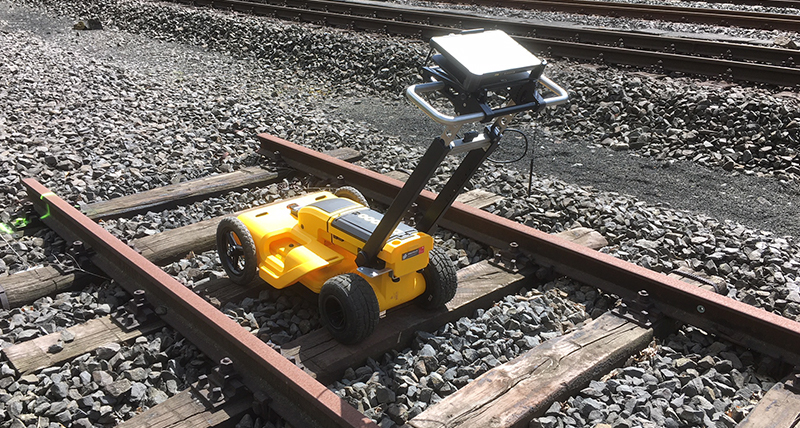Revealing rail’s underground with detection radar
Case study

Author: Renata Barradas Gutiérrez
Most people walk on the street unaware of what lies beneath their feet. Andre Fischer, electrical engineer and CEO of Fischer Scan, knows there is an intricate network of utilities that unwind buried in the subsoil supporting the modern life that raises from the ground above. Pipes, fibre optic cables, steel pipes, power cables, communication lines, among others, need to be accurately detected and mapped before anyone starts digging to avoid any accidents or damage to the utilities. Fischer knows the importance of accurately locating and positing every type of utility and has been working for 10 years providing best-in-class, non-destructive testing and subsoil object location services.
Gearing up to uncover the unknown

GTU Ingenieurgesellschaft mbH, a geotechnical engineering office since 1989, entrusted Fisher Scan with a complex task - detect all metal objects, which could be ammunition rests from World War II, under the rail tracks of Niederhalden’s train station in Germany. Fischer had to accurately position the metal objects in a non-destructive way so the company could install new signal cables under the rail tracks without facing any obstructions.
Geared up with the Leica DS2000 utility detection radar and DX Office Vision utility post-processing software for this task, Fischer collected the Ground Penetrating Radar (GPR) data by effortlessly pushing the DS2000 in single scan lines in area mode to detect the metal objects and utilities. The electrical engineer checked a 3-kilometre section of the underground along the train track in more than 30 locations in an efficient and time-saving way completing the task in just two days.
“Other methods, like trial holes, are too time consuming, could cause utility strikes and have additional costs like manpower and excavators. An alternative metal detector couldn’t be used because there are electricity cables on site,” said Fischer. “The DS2000 is compact, easy to set up, and the onboard software permits to check in real time the collected data on site. The efficient work reduced the time the train tracks needed to be closed saving time and costs.”
GPR data post processing was done in DX Office Vision to create a professional documentation of the detected objects. Using the utility post-processing software, Fischer analysed the B-scans, finding and documenting the hyperbolas that represent the embedded objects. The GPR data provided to the client, including all the buried objects and utilities, were used by GTU Ingenieurgesellschaft to avoid utility strikes and ammunition hits while drilling and digging.
“I’m very convinced about this solution [DS2000 and DX Office Vision] because it is reliable as well as fast and highly performing. This solution proved to be the most suitable system for this kind of tasks and it allows me to work in the most efficient way and serve my clients’ projects,” said Fischer. “The software is intuitive and easy to use and permits to map and verify the data in the office if readjustments are needed.”
Unleashing the potential

The infrastructure that lies below ground must be maintained or repaired continuously. To know the accurate position of utilities, Fischer trusts Leica Geosystems utility detection hardware and software solutions. Equipped with Geosystems technology, Fischer Scan offers competent services in the field of non-destructive testing for building structures as well as the location and positioning of underground pipelines and supply lines using radar and magnetic induction technology. Services offered include:
- Locating and positioning of objects in the ground or concrete
- Scan data analysis consulting in the field and scan data optimisation
- Creation of 2D and 3D scan data and its integration into DXF or DWG data plans.
“My company offers services to detect and position utilities in the underground. With Leica Geosystems as my competent partner, I have a complete solution to grow successfully my business over the next years,” concludes Fischer.
Our Latest News
Contact Leica Geosystems
Want to learn more? We're here to answer your questions.
Want to learn more? We're here to answer your questions.
























